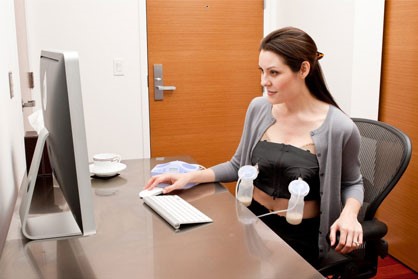Many women will have to return to work or school before they have met their breastfeeding goals. Planning for your return can help you and your baby ease into a new routine.
Before returning to work:
- Take a prenatal breastfeeding class, which may be offered at the hospital where you plan to deliver. These classes offer tips on returning to work and continuing to breastfeed.
- Talk with your employer about the breastfeeding policies at your job.
- Explore childcare facility options. Check if a facility is available close to where you work so you can visit and breastfeed your baby during lunch and other breaks. Ask if the facility has a place set aside for breastfeeding mothers. Make sure the facility will feed your baby with your pumped breast milk.
While on maternity leave:
- Take as many weeks off as you can. At least 6 weeks of leave can help you recover from childbirth and settle into a good breastfeeding routine.
- Practice expressing milk by hand or with a breast pump. An electric breast pump may allow you to work while pumping if you have a laptop or an office with a door that you can close.
- Help your baby adjust to drinking breast milk from a bottle. It may be helpful to have someone else give the bottle to your baby at first. Wait until you and your baby are comfortable breastfeeding before introducing a bottle to your infant.

When you return to work:
- Keep talking with your boss about your schedule and what is or is not working for you. Under the Affordable Care Act (ACA), any business with more than 50 employees must offer their breastfeeding employees reasonable break times to pump for up to 1 year after the birth of a baby and place, other than a bathroom, to comfortably, safely, and privately express breast milk.
- While at work, pump your milk when you usually feed your baby. As a general rule: babies need to breastfeed 8-12 times in 24 hours in the first few months of life. As a baby gets older, the number of feeding times may go down.
- Expressing milk can take 10-15 minutes, sometimes longer. Many women use their regular breaks and lunch break to pump. Work with your employer to schedule your breastfeeding breaks. Breast milk is food, so it is safe to keep in a fridge. Be sure to label your milk container and place it in the back of the fridge; remember to take it with you when you go home for the day.
